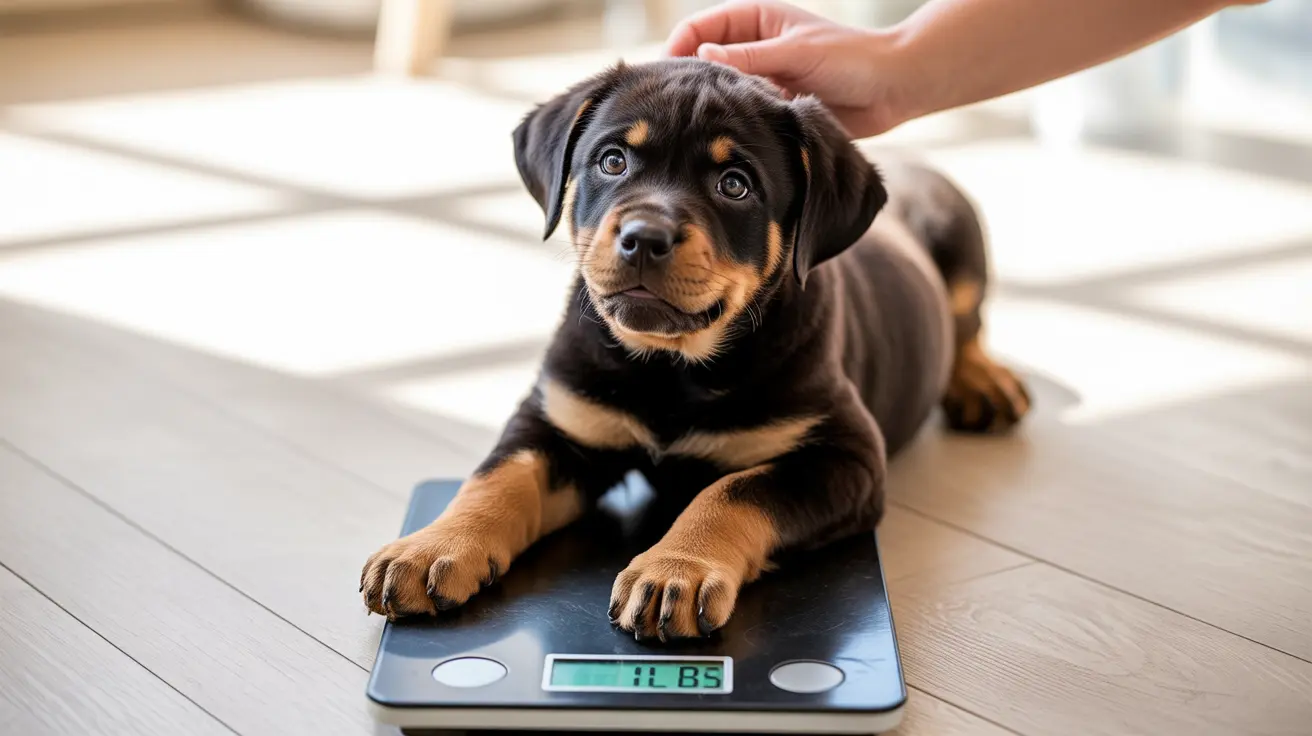Understanding your Rottweiler's growth patterns is essential for ensuring proper development and maintaining optimal health throughout their life. This comprehensive guide explores Rottweiler growth charts, developmental milestones, and what to expect as your puppy matures into an adult.
Whether you're a first-time Rottweiler owner or an experienced enthusiast, tracking your dog's growth against established benchmarks helps ensure they're developing properly and allows you to spot potential health issues early.
Understanding Rottweiler Growth Patterns
Rottweilers follow a distinct growth pattern, with most rapid development occurring in the first year of life. Males typically grow larger than females, with noticeable size differences emerging around 6 months of age. Understanding these patterns helps set appropriate expectations for your puppy's development.
Birth to 6 Months
Newborn Rottweilers weigh approximately one pound at birth. During the first six months, they experience their most dramatic growth phase:
- 2 months: 12-16 pounds (males), 10-14 pounds (females)
- 4 months: 44-51 pounds (males), 35-42 pounds (females)
- 6 months: 64-71 pounds (males), 59-64 pounds (females)
6 Months to 1 Year
Growth continues steadily but begins to slow during this period:
- 8 months: 75-85 pounds (males), 70-75 pounds (females)
- 10 months: 95-110 pounds (males), 75-85 pounds (females)
- 12 months: 95-125 pounds (males), 80-95 pounds (females)
Adult Size and Weight Expectations
Full-grown Rottweilers typically reach these dimensions:
- Males: 24-27 inches tall, 95-135 pounds
- Females: 22-25 inches tall, 80-100 pounds
Factors Influencing Growth and Development
Several key factors affect how your Rottweiler grows:
- Genetics and breeding lineage
- Quality of nutrition
- Exercise levels and type
- Overall health status
- Environmental conditions
Monitoring Your Rottweiler's Growth
Regular monitoring helps ensure healthy development:
- Weigh monthly during the first year
- Track height and length measurements
- Monitor muscle development and body condition
- Keep detailed records for veterinary consultations
Health Considerations During Growth
Watch for common growth-related issues:
- Hip and elbow dysplasia
- Panosteitis (growing pains)
- Osteochondritis dissecans
- Weight-related joint stress
Frequently Asked Questions
What are the typical growth stages and milestones I should expect for my Rottweiler puppy?
Rottweiler puppies experience rapid growth from birth to 6 months, reach their adult height around 12 months, and continue filling out with muscle mass until 2-3 years of age. Key milestones include rapid weight gain in the first 6 months and skeletal maturity around 12 months.
How can I use a Rottweiler growth chart to monitor my puppy's development and health?
Track your puppy's weight and height monthly, comparing them to standard growth charts. Record measurements consistently and discuss any significant deviations with your veterinarian. Use the charts as a general guide while remembering that individual puppies may develop at slightly different rates.
What diet and nutrition plan is best for supporting healthy growth in a Rottweiler puppy?
Feed a high-quality large-breed puppy formula until 12-18 months of age. Avoid overfeeding and maintain consistent meal times. Choose foods specifically formulated to support proper growth rates in large breeds to prevent skeletal issues.
How can I tell if my Rottweiler is growing at a healthy rate, and what signs might indicate a problem?
A healthy Rottweiler should follow their growth chart relatively closely, maintain good energy levels, and show steady muscle development. Signs of concern include significant weight fluctuations, lethargy, loss of appetite, or visible joint problems.
What factors influence the final size and weight of a Rottweiler, and how can genetics and environment affect this?
Final size is primarily determined by genetics, but environmental factors like nutrition, exercise, and overall health play crucial roles. Parents' size, quality of care during early development, and appropriate exercise levels all contribute to adult size and weight.
Conclusion
Understanding and tracking your Rottweiler's growth is crucial for ensuring optimal development and long-term health. Use growth charts as guidelines while remembering that each dog is unique. Regular veterinary check-ups and proper nutrition remain essential components of raising a healthy Rottweiler.






